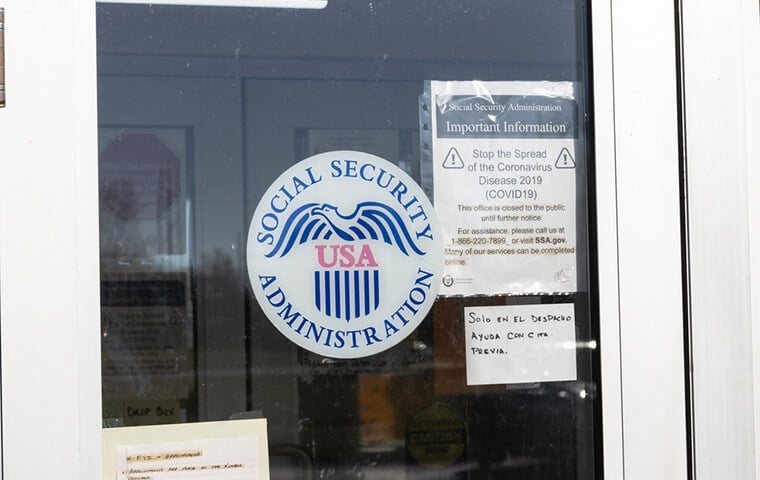 The SSA has 15,000 employees eligible to retire over the next five years and another 10,000 who would be eligible under early-out rules. Image: Jonathan Weiss/Shutterstock.com
By: FEDweek Staff
The SSA has 15,000 employees eligible to retire over the next five years and another 10,000 who would be eligible under early-out rules. Image: Jonathan Weiss/Shutterstock.com
By: FEDweek StaffThe Social Security Administration continues to lose staff and faces challenges in hiring to fill vacancies, both from the outside as well as internally, an inspector general report has said.
The 59,000-employee workforce is down by about 4,000 since 2013 for reasons “including insufficient funding over multiple years to hire the level of staff needed and higher than average attrition rates agencywide,” it said. When the agency does receive funding for hiring, it often is ill-timed, limiting its ability to recruit “before students graduate from college and when college campuses typically hold recruitment and job fairs.”
“Beyond budgeting, senior staff has also noted that fewer candidates are applying for open positions, including entry-level and managerial positions. For entry-level positions, senior staff noted possible disadvantages, including less competitive pay when compared to private-sector employers and fewer workplace flexibilities, like wide-scale remote work options,” it said.
“For managerial positions, senior staff reported staff is less interested in taking on the responsibility that comes with managerial positions, particularly after they saw the extra responsibilities managers shouldered during the pandemic,” it said.
With 15,000 employees eligible to retire over the next five years and another 10,000 who would be eligible under early-out rules, “the loss of technical and institutional knowledge through staff attrition is one of its greatest challenges and may impair succession management and knowledge transfer,” it added.
The report noted that—like many other agencies—the SSA has tried to reduce the workload by driving more services to phone and online delivery, But it said that one of those efforts—a recently launched online tool for filing for Supplemental Security Income benefits—actually “created more work for field office staff who needed to screen out the duplicate appointments. Also, the duplicate appointments decreased available appointment slots, which made other people who needed appointments to have to wait longer for them.”
Partisan Clashes over Federal Workforce All but Assured in New Congress
OPM Erases Personnel Rules It Had Issued Under Trump Orders
Rules Changes Set Tone on Federal Employee Performance, Conduct Issues
OPM Paves Way to Suspend New FLTCIP Enrollments, ‘Reprice’ Premiums
Reasons Federal Employees Stay Vary by Generation, Study Says
Open Season Just Ahead; Offers Choices of Plans, Options
Pay Gap Increases; New, Expanded Localities Again Recommended
Early Marker for 2024 Raise Set: 5.2 Percent
Pay Attention to Family vs. Self Plus One Rates in FEHB, OPM Advises
See also,
FEHB: Federal Benefits Fast Facts
FEHB Open Season Ahead – Time to Shop
Watch for ‘Significant’ FEHB Plan Changes, OPM Says
Enrollee Share of FEHB Premiums to Rise 8.7 Percent on Average for 2023
FERS Retirement Planning Bundle: 2022 FERS Guide & TSP Handbook

